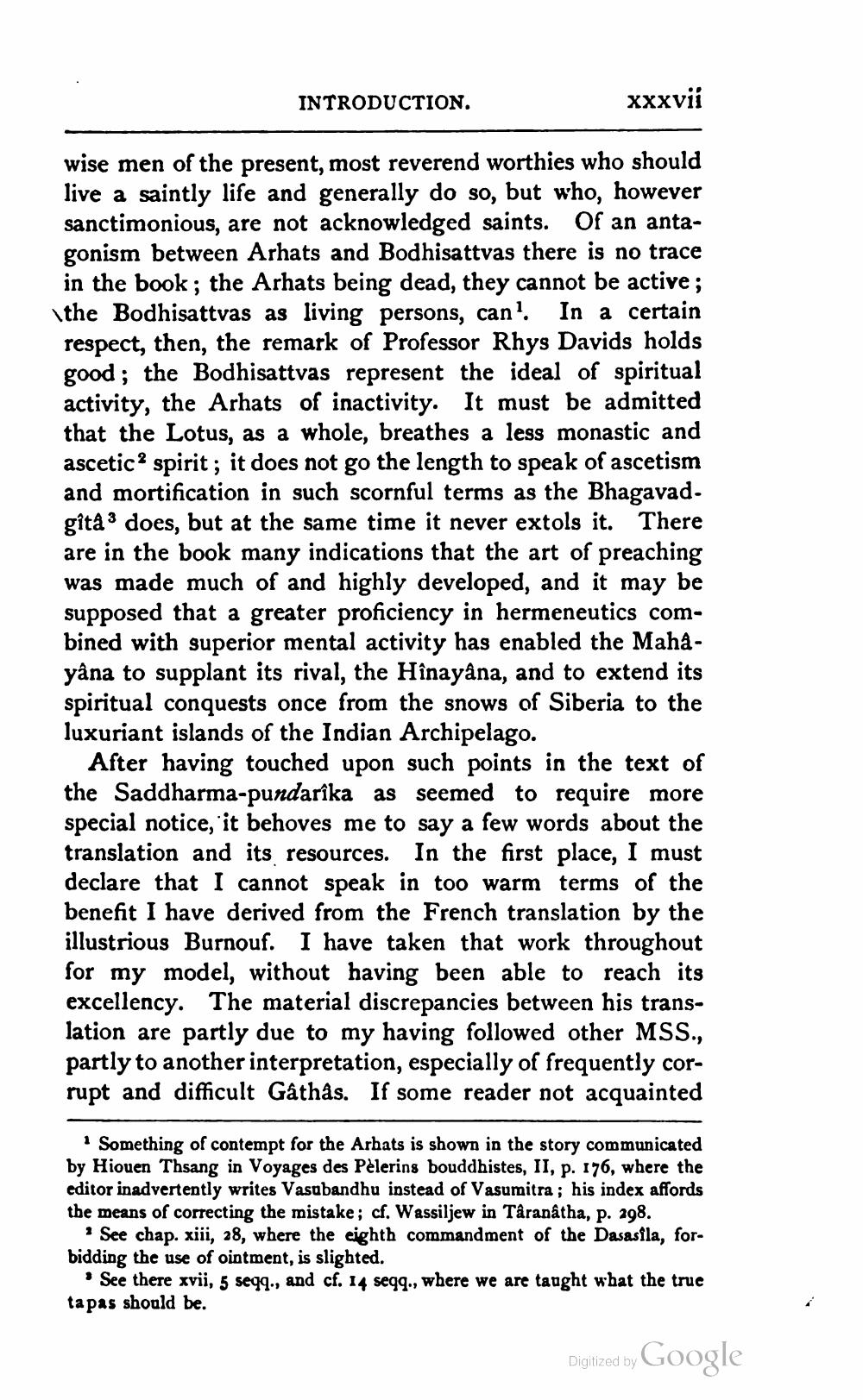________________
INTRODUCTION.
xxxvii
wise men of the present, most reverend worthies who should live a saintly life and generally do so, but who, however sanctimonious, are not acknowledged saints. Of an antagonism between Arhats and Bodhisattvas there is no trace in the book; the Arhats being dead, they cannot be active; \the Bodhisattvas as living persons, can?. In a certain respect, then, the remark of Professor Rhys Davids holds good; the Bodhisattvas represent the ideal of spiritual activity, the Arhats of inactivity. It must be admitted that the Lotus, as a whole, breathes a less monastic and ascetic spirit; it does not go the length to speak of ascetism and mortification in such scornful terms as the Bhagavad. gita 3 does, but at the same time it never extols it. There are in the book many indications that the art of preaching was made much of and highly developed, and it may be supposed that a greater proficiency in hermeneutics combined with superior mental activity has enabled the Mahayâna to supplant its rival, the Hînayâna, and to extend its spiritual conquests once from the snows of Siberia to the luxuriant islands of the Indian Archipelago.
After having touched upon such points in the text of the Saddharma-pundarika as seemed to require more special notice, it behoves me to say a few words about the translation and its resources. In the first place, I must declare that I cannot speak in too warm terms of the benefit I have derived from the French translation by the illustrious Burnouf. I have taken that work throughout for my model, without having been able to reach its excellency. The material discrepancies between his translation are partly due to my having followed other MSS., partly to another interpretation, especially of frequently corrupt and difficult Gâthâs. If some reader not acquainted
Something of contempt for the Arbats is shown in the story communicated by Hiouen Thsang in Voyages des Pèlerins bouddhistes, II, p. 176, where the editor inadvertently writes Vasubandhu instead of Vasumitra ; his index affords the means of correcting the mistake; cf. Wassiljew in Târanátha, p. 298.
* See chap. xiii, 28, where the eighth commandment of the Dasasila, forbidding the use of ointment, is slighted.
• See there xvii, 5 seqq., and cf. 14 segg., where we are taught what the true ta pas should be.
Digitized by Google




